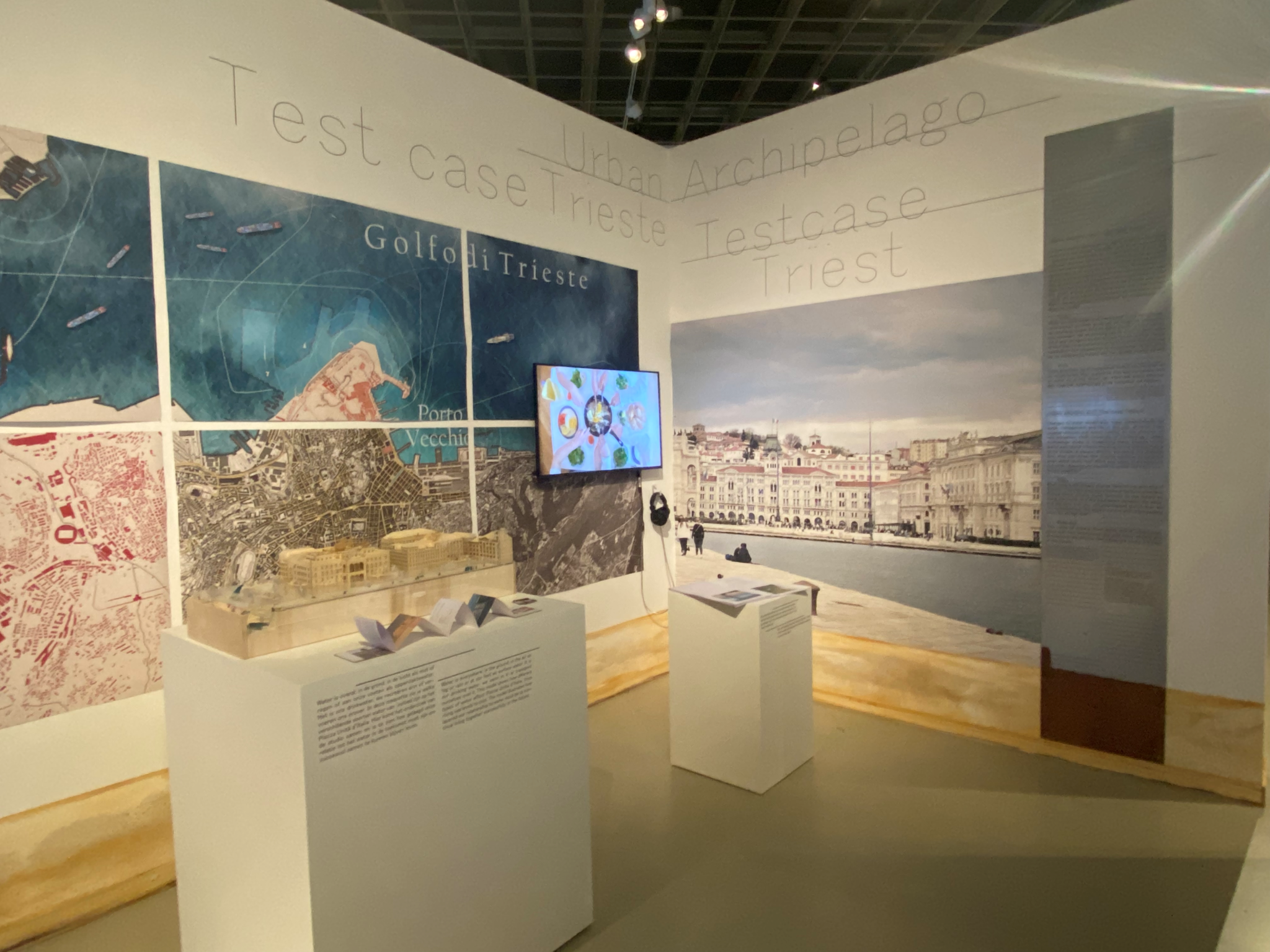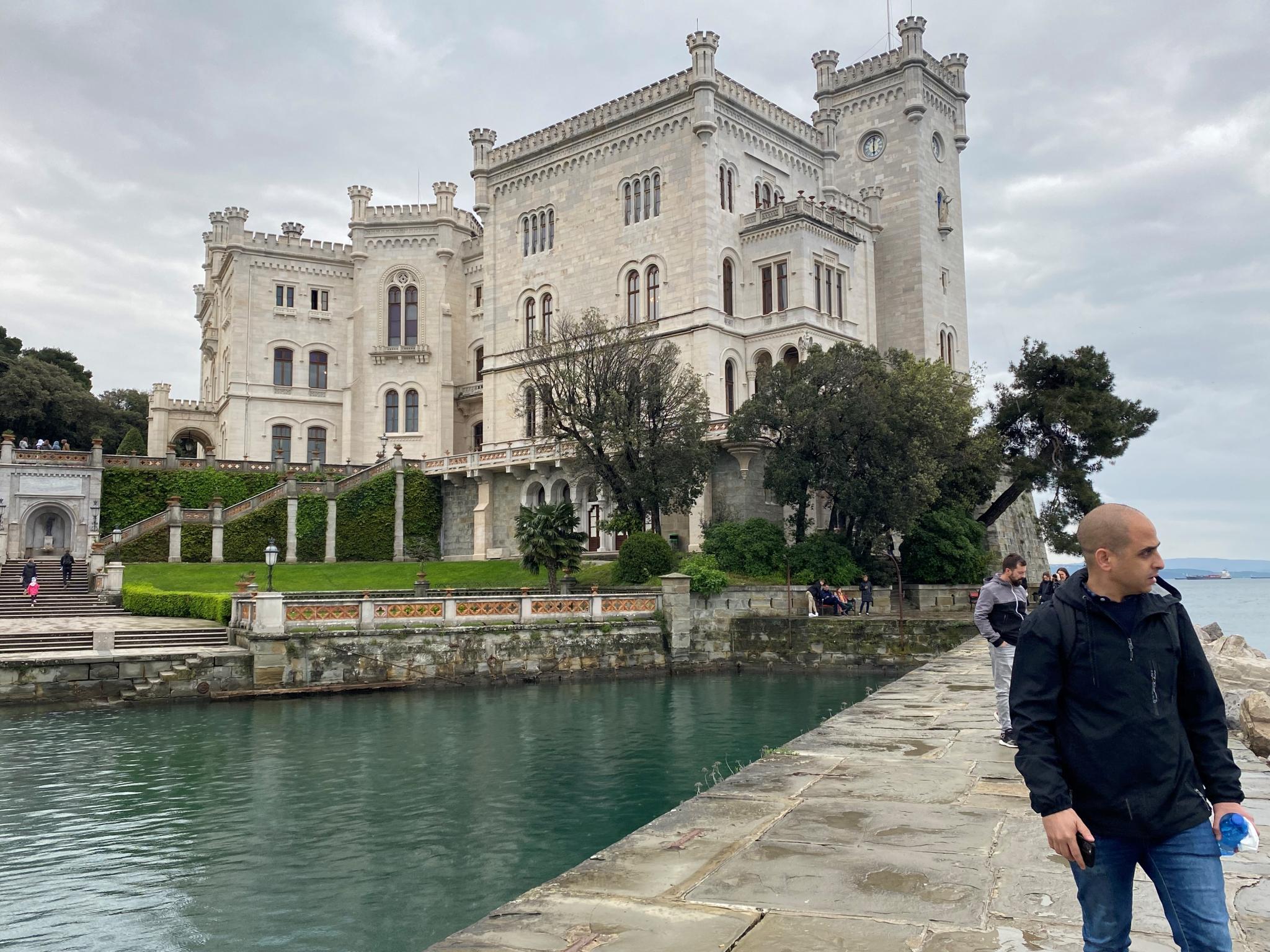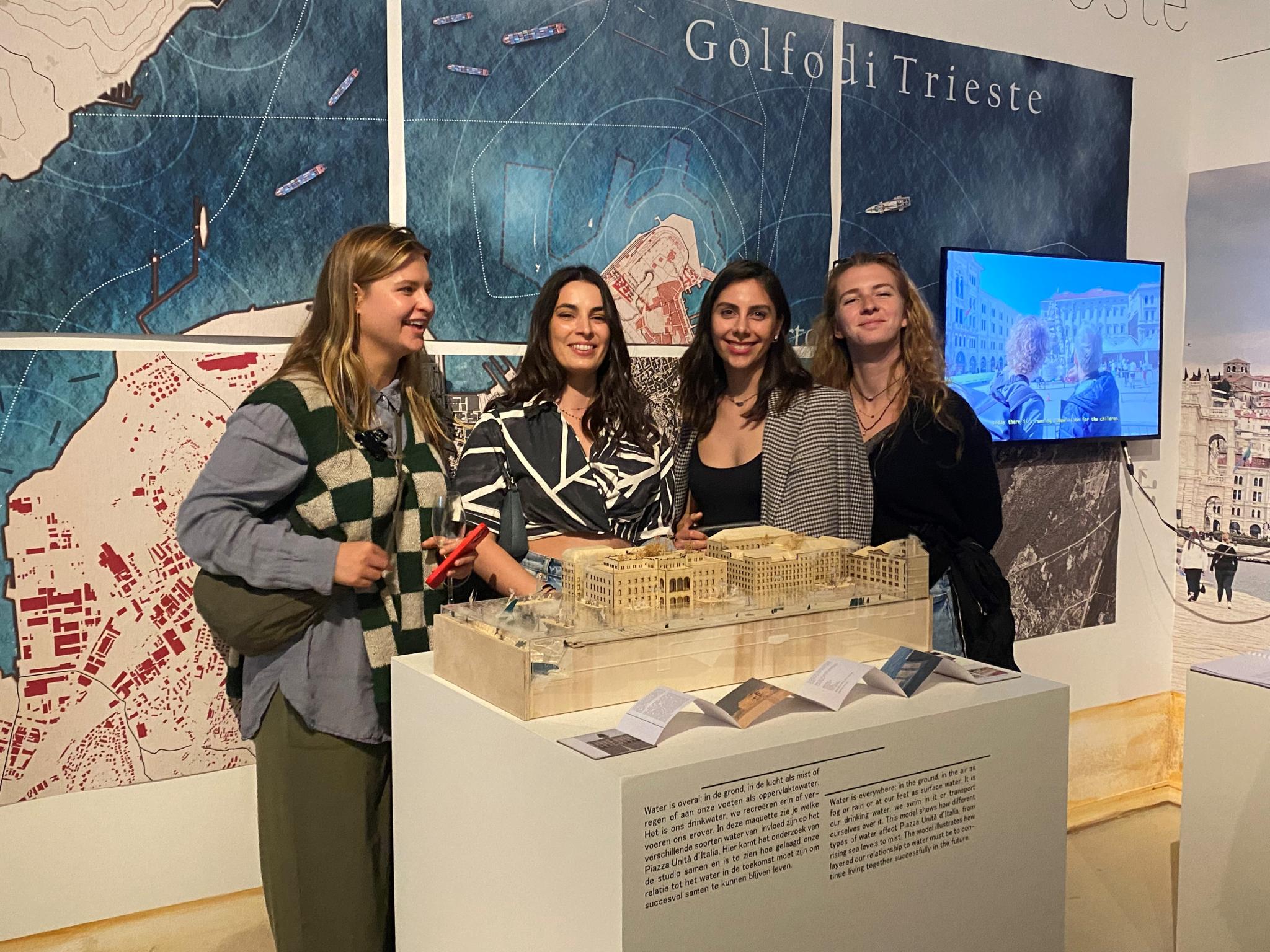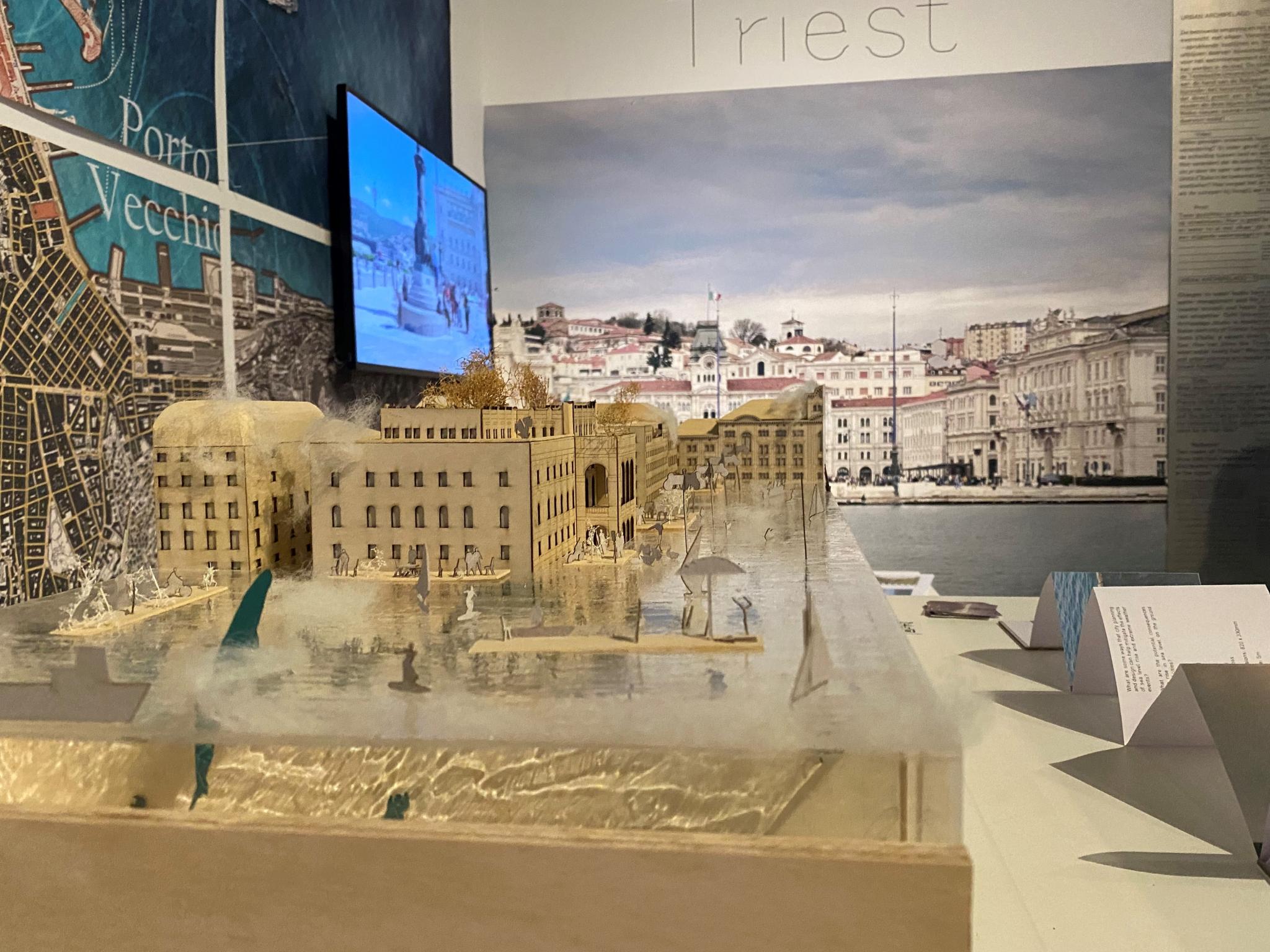Carola Hein, Maurice Harteveld, Paolo De Martino, John Hanna, Muamer Tabakovic, and Carlien Donkor

At a time of changing water conditions - more rain, less rain, flooding, drought, sinking and rising groundwater levels, etc. - we must urgently rethink how we teach future architects and urban designers, landscape architects and environmental designers. Water is not only a chemical substance or something to bridge for transportation, water is an entire system, connected from source to sea, from fresh to salt water, used for pleasure or to connect all our buildings and urban structures running underneath. Historically, we lived with water in ways that changed through the seasons, but for the last century and a half, we have tried to resist and control water, using more and more defense infrastructures such as dykes or walls to protect people from flooding. Resisting water is no longer an option, however. As water systems change, we need to adapt buildings and find new ways of living with and/or on water.
Designers need to grasp the larger environmental systems, such as those of water and energy, in which buildings, neighborhoods, cities and landscapes are placed. They need to understand that buildings and public spaces were historically developed for a certain local climate and practice. Entire cities and countries are the result of water management and careful architectural and urban design. Consider building foundations that respond to local ground conditions. Thick walls keep houses warm. Open water streams with vegetation keep the city cool. Large overhangs protect against heavy rain or snow. Unpaved urban spaces store water adaptively. But what will happen to cities, buildings and public spaces when water systems change? We question what will happen to this heritage in times of sea-level changes and extreme weather conditions: how can we live with water in the future, based on a better understanding of water systems from the past?
If we put this as a challenge to our students and inform them about the many ways in which water shapes cities, can they develop scenarios about how to live with water? This is the challenge that we put up front in our graduate elective design studio ‘Urban Archipelago’: how will the city of the future deal with different water systems?
We can potentially study water systems in any city, as water is key to the existence of urban settlements. Yet, the challenges that we are facing today are particularly evident in cities along rivers and on the coast, where large quantities of water challenge dense urban areas. For the design studio, we wanted to focus on a place that would inspire students. We were interested in finding a place where challenges related to water are particularly visible. This led us to the choice of Trieste, a coastal city on the Adriatic showing that water is omnipresent in the public space of the city.
Trieste may be less well-known than many other Italian cities, and draws less foreign tourists than other famous places in Italy. As a border city with a long past as a port city, it has many features that are unique to its sea-land intersection. National borders around Trieste shifted several times, and a variety of Italian, Austro-Hungarian, Slovenian, Croatian, Serbian and German people, among others, came to the city through time. As a result, Trieste’s society and spaces are quite diverse and unique. The historic Piazza Unità d’Italia - formerly also known as Piazza Grande - is Trieste’s main square, located in the midst of the city and facing the Adriatic Sea.

Built on reclaimed land, the city represents architecture and urban design of a time when resisting and controlling water dominated the professions. The particular monumental appearance of the city’s main square was achieved when Trieste served as the principal seaport of the Austro-Hungarian Empire. The square is home to the Municipal Palace and to the Lloyd Triestino, emphasizing its relation to maritime practices. A number of statues further emphasize the importance of water for the city. The square is monumental without any greenery, with a view of the sea at a place where once an old harbor basin was. Looking very stony at first sight, the square effectively celebrates the presence of water as a background.

Trieste thrived as a result of maritime transport. However, historic warehouses built alongside the coastline, according to the model of Hamburg’s Speicherstadt, have been abandoned for decades now and are falling apart. A local committee, led by Antonella Caroli, president of the Italia Nostra and its Trieste section, has been fighting for decades to preserve these unique buildings. Recently, some of the buildings have been restored, yet many of them are still slated for demolition. New plans propose the preservation of some spaces, but these plans do not address current water challenges and opportunities in a holistic way. They seem to lack a clear vision that takes into account the changing water context.

The long coastline and its pedestrian walkway underscore the beauty of the sea. The Villa Miramare at the end of this walk, and situated on a bare rocky spur of limestone origin, represents Trieste’s geopolitical cultural mix: the eclectic ‘Castelletto’ was built for Charlotte of Belgium and the Austrian archduke Ferdinand Maximilian, a member of the House of Habsburg-Lorraine, Viceroy of Lombardy-Venetia, and later appointed Emperor of Mexico. It sits on the outskirts of the city with a view on the Adriatic. In its beautiful and extensive gardens, leaves gather raindrops, while open ground absorbs the water. The landscape is shaped with water fountains, basins and a lake. Villa Miramare is the counterpart of both the urban public space of Piazza Unità and the industrial warehouse district. In the context of changing water systems, these three spaces exemplify different settings: urban, industrial and rural.

Trieste is a vertical city, with its long coastline and steep incline from the deep sea to mountains providing multiple insights into the ways water has shaped a city and, vice versa, how the city has been shaped by it. Taking a sectional approach through three settings, we see deep seas that open up to large ships on the one side and high mountains in the hinterland. Rivers connect mountains and sea. Some have been covered up and are used as sewage lines. Water is at the core of the landscape, although sometimes people tend to forget this as water becomes confined to its own spaces: flowing through multiple pipes built into our houses, and into our cities through sewage lines.
Personal experience is key to understanding the role that water plays in our lives. The students and us, as supervisors of the design studio, therefore went to Trieste for five days to experience these elements. Together we explored the historic settings, the relation to water, and also visited the modern port and its huge container terminals. Students studied maps, made pictures, started to document narratives, recorded films, and prepared models. Within only a few days the students’ ideas came together. In working groups, they collectively developed confidence in their skills while trusting their own capabilities and creativity. The students were challenged to understand the unique water condition of the city and translate key conditions into an exhibition that opened within a few days after our return.
On 13 May 2023, Water Cities Rotterdam opened at Nieuwe Instituut (NI) in Rotterdam with the work of Kunlé Adeyemi (NLÉ), the architect of the Makoko Floating School, a floating building system first shown in Lagos and displayed at the Venice Biennale in 2016, where it won the Silver Lion. Our students’ contribution to the expo was designed to consist of four elements: a map, a view, a model and a series of films that depicted a future of living with water, as well as a booklet that documented the student work. It was a pleasure to see the beaming faces of the students when they heard the introductory speeches by NI director Aiyric Chen, local alderman Said Kasmi and Kunlé Adeyemi, and when they explored the exhibition and particularly the part of the show they had created themselves.

The section on Trieste with contribution by the students featured bright maps and a picture of the Piazza Unità as background. The model group showed the same Piazza, but added a plexi glass layer to symbolize water at the height of the first floor of the plaza. Such a flooded condition would require new forms of living and mobility that might challenge current ones. The model already suggests the designs to come, a swimming beach and a swimming school, and a whale diving into the deep water that borders the land. The film group developed an impressive narrative about the conditions of the urban square in its current airy state. Featuring the wind blowing hair and fur and carrying water drops, the film tells the story of our future neighbor, a fish, that has a telling fate in the film.

Some additional elements complement the exhibition, notably a fold-out booklet and the third issue of the journal Blue Papers, which provides a link to the larger themes of water, culture, heritage and sustainable development and includes an interview with Kunlé Adeyemi.
Students and faculty have crossed a threshold in making this exhibition. They have achieved a new level of understanding the role of water systems for architecture and urban design. In a next step, they will design future solutions, to be shown in June 2023. We invite the audience to stay tuned and engage with the ways in which water changes architecture and urban form. We hope that you will join us in bringing, and bridging, water to design.
Visit the exhibition: https://nieuweinstituut.nl/en/projects/waterstad-rotterdam
Check out Blue Papers Vol. 2. No. 1, including “Interview with Kunlé Adeyemi | African Water Cities: Embedding Local Knowledge for Sustainable Coexistence between Humanity and the Environment” (interview with Carlien Donkor and Matteo D’Agostino): https://bluepapers.nl/index.php/bp/article/view/50
Acknowledgements
This blog has been written in the context of discussions in the LDE PortCityFutures research community. It reflects the evolving thoughts of the authors and expresses the discussions between researchers on the socio-economic, spatial and cultural questions surrounding port city relationships. This blog was peer-reviewed by members of the PortCityFutures community, and edited by the PortCityFutures editorial team: Vincent Baptist and Foteini Tsigoni.
